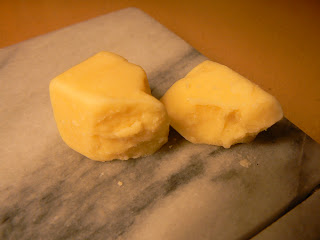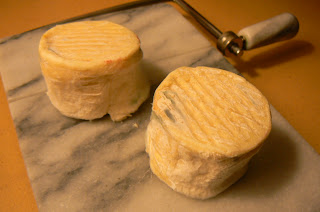Right, so whether or not you've been following along since the beginning or are just dropping in today you will have noticed I seem to be waging a war against this phenomenon known as "pasteurization".
 |
| Ol' Lou | | |
For anyone who purchases their milk at a supermarket, be it in the USA, Europe or elsewhere, what you are buying is a pasteurized product. For those living in the USA most all dairy products will be pasteurized, in fact, as well as almost every other food and liquid product.
Pasteurization is, of course, the process of heating food to a certain temperature to kill unwanted bacteria and thus prolong the shelf life. While this has been practiced to certain extents for centuries the modern scientific understanding of it came about through the work of one Louis Pasteur, the food industry's favorite Frenchman. In 1862 he was the first to spread this food-safety knowledge to the greater public and so made food production, and consumption, a less risky ordeal.
And with the sound of roaring applause, so died flavor.
You see milk is, literally, alive with flavor. It is dynamic, nuanced, reflective of the pasture on which the animal grazes and full of fats, proteins, vitamins, and minerals. Also, like every breath of air you take and every surface you touch and so on and so forth, it has bacteria. Oddly enough this was not a major problem in the long centuries leading up to the industrial revolution, when cheeses were made locally, sold locally, or at least sold in a timely manner, meaning the chances of disease spreading through bad or spoiled cheese was rather low. However when the demand for cheeses necessitated the mass production and shipping of these cheeses the occurrence of cheeses spoiling and the resulting sicknesses increased dramatically, where in steps our hero Louie.
In his War on Bacteria, however, there is quite a lot of collateral damage. Anyone who has heated milk on the stove or in a microwave, say for some delicious hot cocoa or chai, will notice how the flavor changes considerably. A marked "scalded" flavor appears and with it dies any nuance the milk might have previously had, though to be fair it mightn't have had any in the first place if it was already ultra-pasteurized. The same problem plagues the milk used for cheese, and indeed the flavor difference is usually just as noticeable.
 |
| Boo |
There are a couple different ways to pasteurize milk so that it passes inspection; one is relatively good, the other is uniformly bad. The main difference between the two rests in how gently the milk is heated, or how high a temperature and for how long. Notice how microwaved milk will taste worse still than milk that's been put in a saucepan and slowly warmed up, it's the same basic effect. The "good" way heats the milk to 144ºF (62ºC for the rest of the world) and holds it at that temperature for 30 minutes. The bad way heats the milk to 160ºF (71ºC) and keeps it there for all of 15 seconds. Guess which way is most popular with large economies-of-scale operations.
 |
| Worth it every time |
Now you may be looking at a brick of Parmigiano Reggiano and asking yourself what difference it makes, and while that particular Italian king of cheeses is in fact a raw milk cheese it's true that the difference is much more noticeable in fresher, younger products. Take Brie, or Camembert, or any fresh goat cheeses for example. These are delicate cheeses that are about as close as you can get to spreading milk on a baguette (yes, or Mozzerella or Ricotta yada yada I'm generalizing bear with me). Especially with these young cheeses the character and quality of the milk used is of paramount importance to the resultant flavor of the cheese, seeing as there is hardly anything done to the milk to alter and affect its flavor. If you were making a dress you wouldn't buy the finest silk and then run it through the washer and drier with bleach to make sure it was clean before working on it, it'd be ruined before you even began. If you're ordering filet mignon at a fine steakhouse you know that you can order it it rare because the kitchen is using the best, healthiest cut, and you want the flavor of the meat bursting out of every bite instead of burned away to charcoal like a hamburger left and forgotten on the grill. From quality beginnings you want quality end products to shine, you want cheese to evoke the flavor of the field and not the factory.
Here, of course, there is an important distinction to be made. Namely, that the milk being used by Kraft was never, could never, will never be fine silk, choice tenderloin quality milk. They could curdle it in the very tubes through which it's pumped out of their corn-fed cows and the cheese would still taste like plastic. In fact it's a very good thing that Kraft pasteurizes all of it's milk, because between the poor living/eating condition of it's dairy cows and the emulsifying process through which it creates processed cheese you'd almost certainly contract something from it's raw milk products. On the other hand farmstead and locally sourced dairy products, where the person in charge is or at least recently was concerned with the quality of the product above all, are inherently safer and less disease-prone. It makes sense; you have healthy animals eating healthy food living healthy lives you'll have healthy milk and healthy cheese making for healthy humans. You have sickly animals by the thousands eating pesticide-laden corn shoulder to shoulder all day in factories standing 24/7 in their own [CENSORED FOR CONTENT] you'll have dangerous milk, dangerous cheese, and sick humans. You'll also have more money, assuming you own said animals and said factory and hey, if reducing the flavor of that cheese to sawdust is what lets you keep the money while not making people sick, then clearly capitalism says "yes".

Or at least, so the system is set up. In the golden years, or what I've heard were the golden years as I'm a child of the current Great Cheese Oppression, we could import those fresh French chevres, those delicate Bries, and so on and so forth. Then the man stepped in. Starting in 1965 the US government started issuing Pastuerized Milk Ordinances dictating the conditions under which milk could be produced and sold. In 1985 the import and sale of cheeses not meeting these specifications was no longer allowed as they did not meet the "Grade 'A'" specifications. In fact dairy-borne disease continues to be a problem and even more so food-borne (yes those raw meats and veggies) is still a "danger". And yet high quality raw food remains safer than poor quality ultra-adulterated food. If only the government could force companies to run healthier overall they wouldn't need to make up for it by sacrificing the flavor of the end product. Instead raw milk products aged under 60 days (that's all the fresh, delicate cheeses for those of you still reading this) are not allowed to be sold in the US. Some European producers have responded to this by pasteurizing their milk or aging it longer for export, but the bottom line is that they're compromising on the integrity of their product for the sake of making it "import-safe" in the eyes of the FDA. Better to stay in Europe and still taste like they should than to limp across the border, shadows of their former selves.
To be fair, and I've tried to put this out there earlier as well, there is the remote possibility of contracting a disease from unpasteurzied dairy products. It's again it's about the same risk as from eating anything, as though we haven't all heard of massive food recalls and suddenly looked again to see what brand of eggs we used in this morning's breakfast. That being said adding more risk unecessarily is not a good idea, and generally the elderly, infants, nursing or pregnant mothers, and those with immunodeficiencies are advised to avoid raw milk dairy products.
In the end only you control what you eat. I'll always eat raw milk cheese when I have the chance, I find it better to be informed about where my food is coming from and take caution accordingly rather than have the government scare me into eating plastic. I wouldn't order a hamburger cooked rare from Applebee's and I wouldn't eat a raw milk product from an untrustworthy source. Fortunately for myself and cheese-fanatics across America there are enough dairies using the gentle pasteurization method and so maintaining the integrity of their product that we can still enjoy truly delicious cheese without having to fly to Paris. And who knows, one day they might go all 21st Ammendment on the ban of raw imports and our children, yea our children's children, will once again know the taste of real French Brie.
Cheese eating men and women of all countries, UNITE!
































